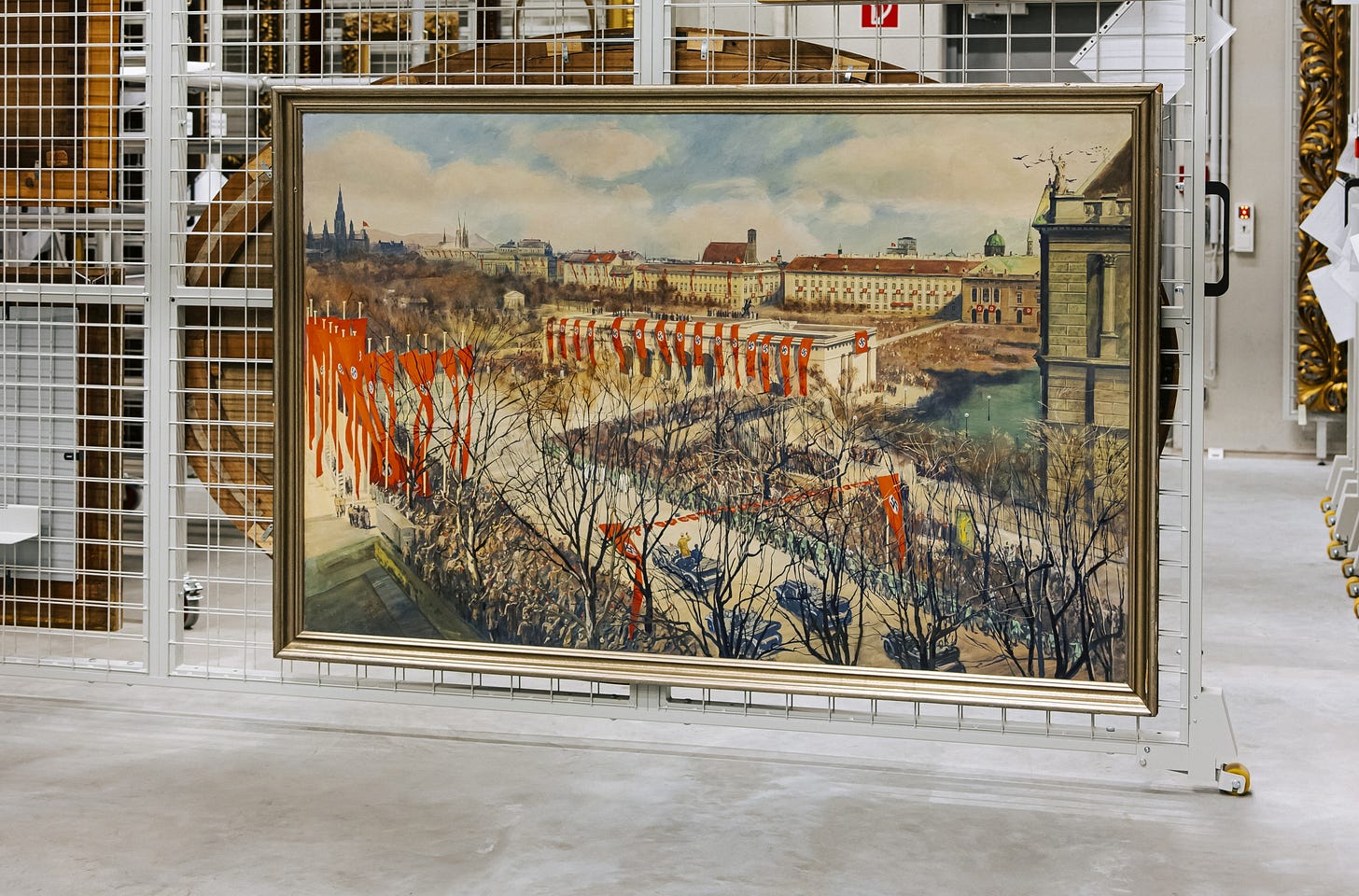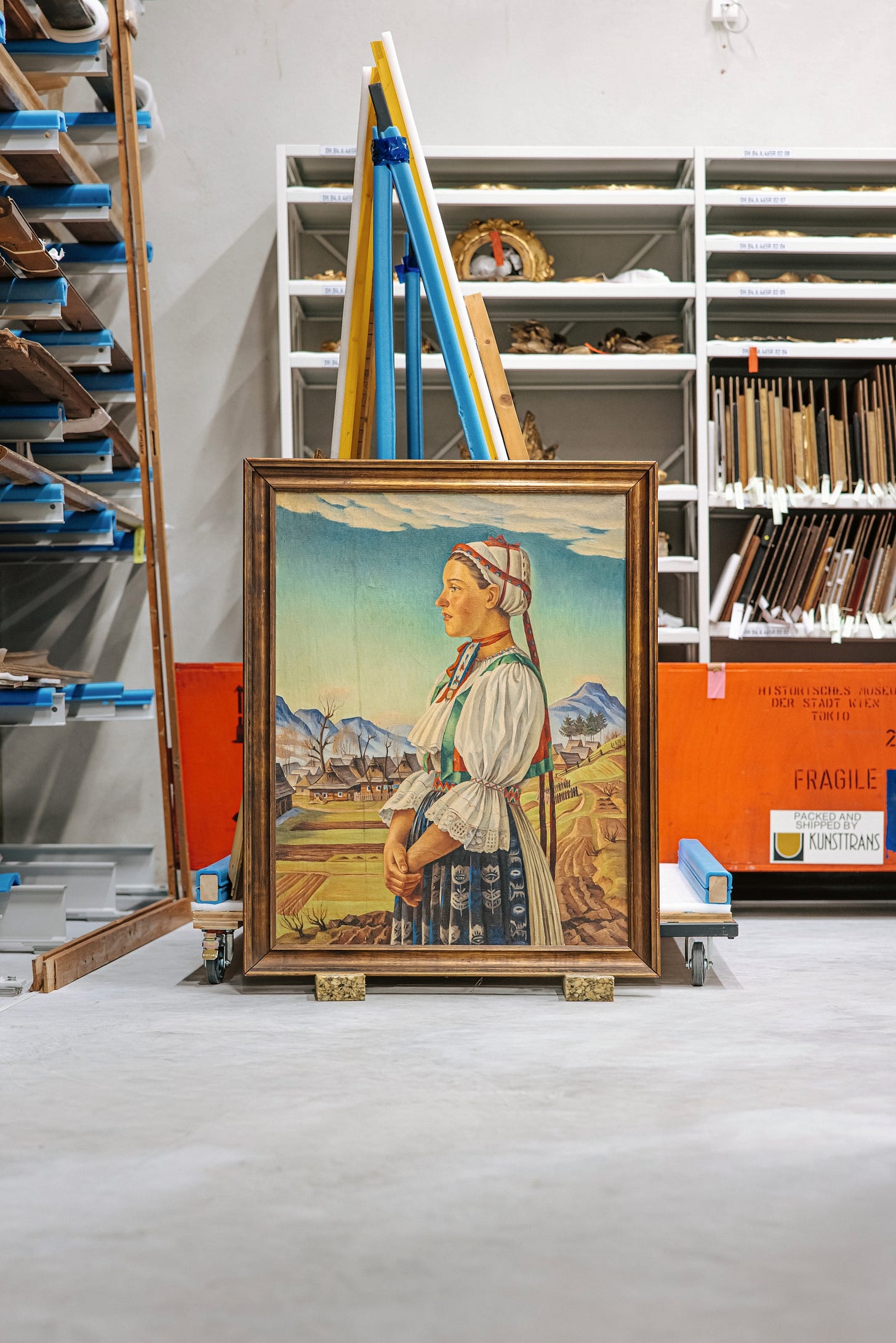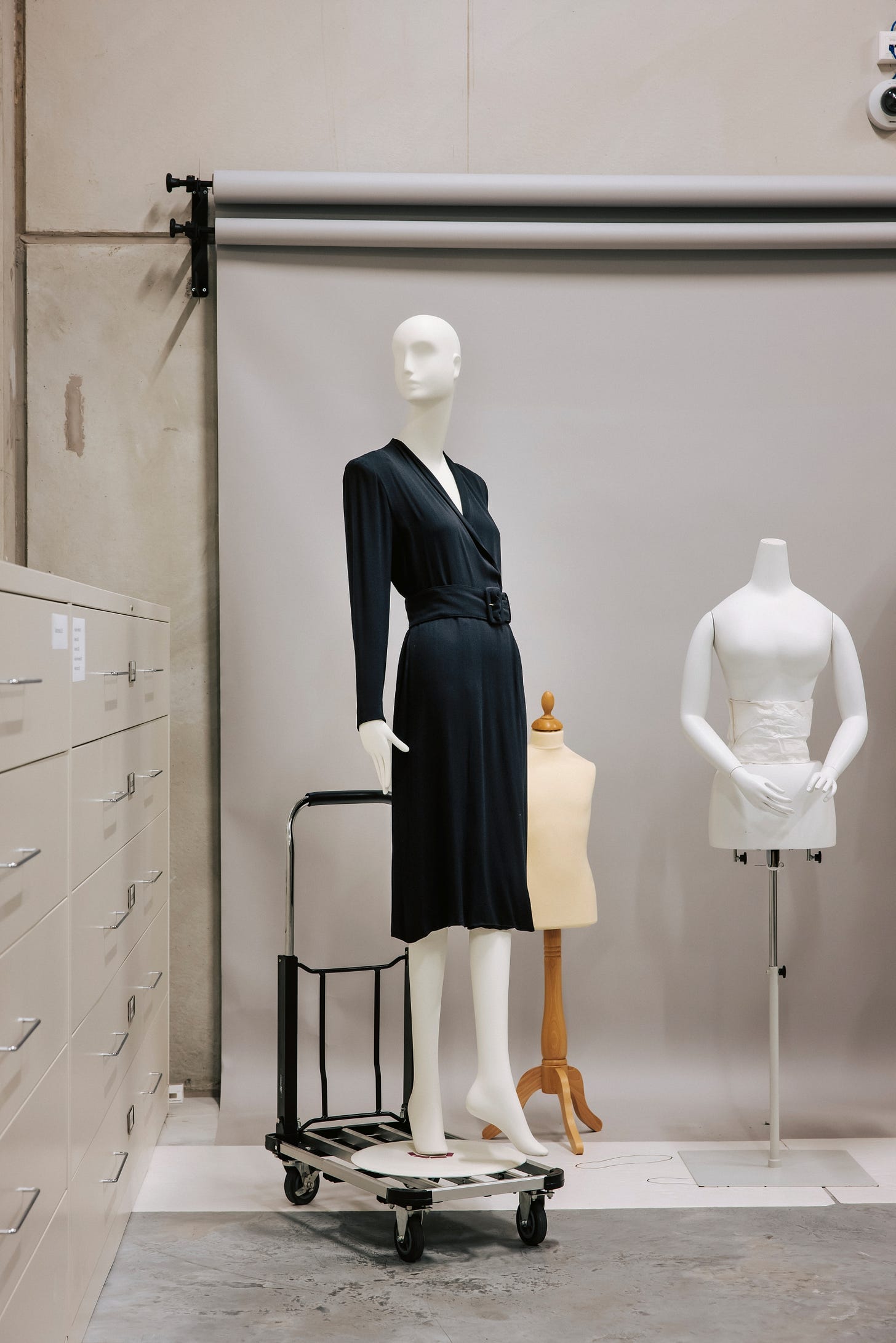In Line
A new exhibition details how, following the Anschluss of March 1938, the Nazi regime brought the Viennese artistic scene under its control
Servus!
With the Anschluss of March 1938 came the Gleichschaltung, the attempt by the new Nazi regime to impose total control over all aspects of Austrian society. Of particular importance was the country’s artistic scene, art being a vital instrument of Nazi propaganda. All art—painting, graphic art, and sculpture; architecture, garden and interior design—was brought into line and made subservient to the Nazis’ ideological project. A new exhibition at the Wien Museum, Vienna Falls in Line: The Politics of Art under National Socialism, leans on new archival research in order to demonstrate how this was achieved and how Viennese artists chose to navigate and collaborate with the Nazi regime.
The instrument the Nazis used to bring the artistic scene to heel, to nationalize it and enforce ideological conformity, was the Reich Chamber of Fine Arts (Reichskammer der bildenden Künste). Organized under the auspices of Joseph Goebbels’s Reich Ministry of Public Enlightenment and Propaganda, membership of this powerful institution was a prerequisite for working in and accessing the art world in Austria after March 1938. One could neither receive a commission from the state nor permission to show one’s work without membership of the Reich Chamber of Fine Arts. Admittance was dependent upon a person’s religion and politics as well as membership of the NSDAP, a means of weeding out undesirable artists such as Jews and political opponents.

Viennese art in the period 1938-1945 very much conformed to the Nazi aesthetic. By nationalizing art and establishing itself as the sole commissioner and purchaser of new work, the Nazi regime secured its influence over art and its aesthetics. Early works such as Igo Pötsch’s Fahrt des Führers zur Proklamation, pictured above, celebrated Adolf Hitler and glorified the Anschluss. Art became propaganda, with exhibitions like 1939’s “Berge, Menschen und Wirtschaft der Ostmark“ and the work of the painter Hertha Karasek-Strzygowski, pictured below, playing up Germanic folkish traditions in keeping with the Nazi image of a Volksgemeinschaft.

Around 3,000 Viennese artists became members of the Reich Chamber of Fine Arts and benefited directly from the patronage of the Nazi regime. The City of Vienna’s newly-formed cultural office (Kulturamt) was a major commissioner of new works of art, in particular for the Nazis’ ideologically-driven renovation of city hall, and giver of grants and prizes. The Nazi regime’s promotion of Viennese fashion and subsidies for new schools of design, art, and fashion, meanwhile, gave the city’s designers the opportunity to showcase their wares to an audience across Nazi Germany.
After the Nazi regime’s collapse and Austria’s liberation by Allied forces, the Reich Chamber of Fine Arts was dissolved. Initially, attempts were made to purge the artistic scene of Nazis and those who had collaborated with the regime, with NSDAP members banned from the Reich Chamber of Fine Arts’ successor professional organization. But as in other spheres of Austrian life, this desire did not hold. The rush towards normality and desire to forget resulted in a certain continuity of personnel between those who had found work under the Nazi regime and those who received commissions from the state in the postwar democratic Second Republic. While exiled artists were discouraged from returning to postwar Austria by its hostile atmosphere towards the victims of Nazism, its beneficiaries were able to go on much as before.
Vienna Falls in Line: The Politics of Art under National Socialism runs at the Wien Museum until April 24, 2022.
Bis bald!
Thank you for signing up to the Vienna Briefing. If you know someone who would be interested in receiving this newsletter, consider sharing it with them today.
Tapped Out
Austria has run out of people willing to get vaccinated, according to recent data from the Austrian Corona Panel Project. Only the undecided and outright refuseniks remain. 65.32 percent of Austria have now received one dose of a coronavirus vaccine, while 62.10 percent have been fully vaccinated.
Locked Down
Austria’s unvaccinated will be subject to a lockdown if the number of coronavirus patient occupying intensive care beds reaches 600, the government has announced. If 500 intensive care beds are occupied by COVID-19 patients, only the vaccinated will be allowed to visit restaurants, sporting, and cultural venues.
Round Two
The People’s Party (ÖVP) and Freedom Party (FPÖ) have agreed to form a new coalition government in the state of Upper Austria. The ÖVP won statewide elections handsomely at the end of September, while the FPÖ saw their vote share fall fall by more than 10 points compared with elections in 2015.




